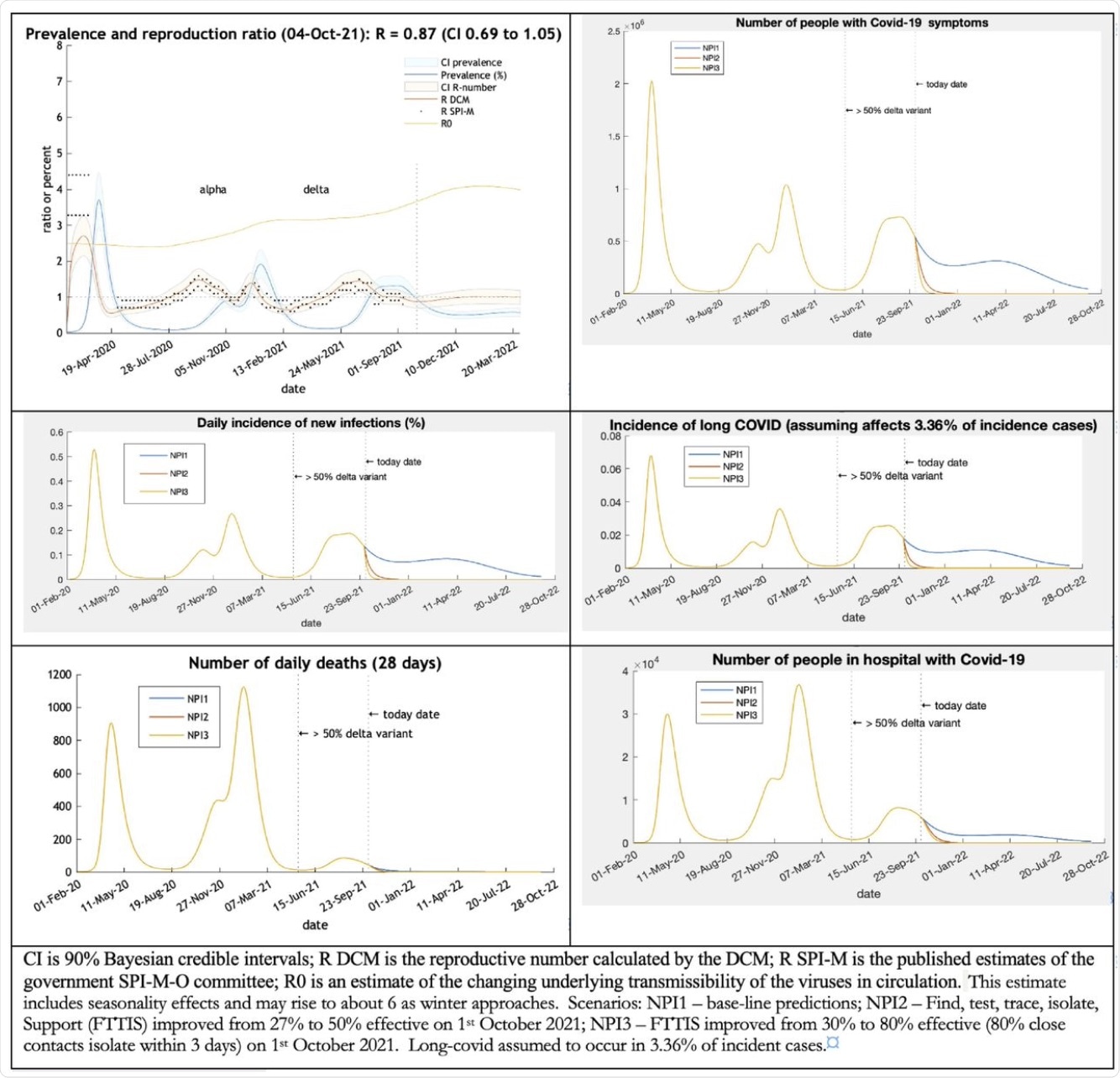The onset of the coronavirus disease 2019 (COVID-19) pandemic brought about by the severe acute respiratory syndrome coronavirus 2 (SARS-CoV-2) has caused over 4.85 million deaths throughout the world. Most scientists around the world agree that the most effective method to end the current pandemic is through vaccination.
Therefore, the quest for a suitable vaccine against SARS-CoV-2 led to the development of several vaccine candidates. These vaccines have undergone various rounds of clinical trials before they were able to be administered to humans on a large scale.
As a result of the vaccine rollout in the United Kingdom, many have chosen to forego public health control measures such as social distancing and mask-wearing. Thus, the current situation in the U.K. provides a natural experiment to other countries for assessment of their own public interventions.
 Study: A twelve-month projection to September 2022 of the Covid19 epidemic in the UK using a Dynamic Causal Model. Image Credit: NicoElNino / Shutterstock.com
Study: A twelve-month projection to September 2022 of the Covid19 epidemic in the UK using a Dynamic Causal Model. Image Credit: NicoElNino / Shutterstock.com

 This news article was a review of a preliminary scientific report that had not undergone peer-review at the time of publication. Since its initial publication, the scientific report has now been peer reviewed and accepted for publication in a Scientific Journal. Links to the preliminary and peer-reviewed reports are available in the Sources section at the bottom of this article. View Sources
This news article was a review of a preliminary scientific report that had not undergone peer-review at the time of publication. Since its initial publication, the scientific report has now been peer reviewed and accepted for publication in a Scientific Journal. Links to the preliminary and peer-reviewed reports are available in the Sources section at the bottom of this article. View Sources
A new study published on the preprint server medRxiv* utilizes dynamic causal modeling (DCM) to predict the effects of letting SARS-CoV-2 sweep through a largely vaccinated population. DCM combines epidemiological models with behavioral modeling at the population level. Therefore, the predictions of DCM could provide a baseline for other countries that would help them monitor the effects of their public health control measures.
About the study
The current study involved DCM which had certain advantages, as these models could continuously assimilate data as well as modify model parameters such as changes in social distancing, the transmissibility of the virus, and vaccine coverage. The model also provides up-to-date projections and estimates, is fully described, includes all the standard susceptible, exposed, infected, removed (SEIR) data, as well as incorporates interactions between variables.
The standard SIER models depend on the choice of parameters, which requires assumptions, whereas the DCM model is assumption-free. The model is quite accurate in modeling the past stages of the pandemic, as well as predicting what will happen if everything continues as it was.
The current study also included data from Public Health England (PHE) and the COVID-19 Infection Survey of the Office of National Statistics (ONS). Several assumptions are made in the study, such as lockdown will not be re-imposed, no mitigation efforts will take place in schools, no new variants of the virus would arise despite little travel restrictions and porous borders, and the Alpha variant is 50% more transmissible than the original variant while the Delta variant is 50% more transmissible than the Alpha variant.
The study also involved estimation of vaccine effectiveness concerning transmission, pathogenicity, mortality, and protection from infection. For that, prior estimates derived from the ONS study and mortality from the PHE study were required. The different vaccines used in the U.K. until September 15, 2021, included the ChAdOx1, BNT162b2, and mRNA1273 (Moderna) vaccines, which comprised 53%, 45%, and 3%, respectively, of all vaccines distributed throughout the U.K.
Three different scenarios were presented in the study. The first (NPI1) provided projections with baseline parameters, the second (NPI2) improved the identify, test, trace, isolate and support (FTTIS) system from 30 to 50%, and the third (NPI3) improved the FTTIS system by 80 percent.
Study findings
The results of the current study indicated that vaccines were highly effective in reducing mortality and morbidity; however, they were not s effective in reducing transmission. The model suggested that loss of immunity occurred in 284 days, which was similar to the results of the ONS study. Therefore, booster doses of the vaccines may be required.
The model also predicted that despite effective vaccinations, the U.K. could expect another significant wave of COVID-19 that could result in 3 million post-COVID-19 Syndrome cases, 150,000 hospital admissions, and 300 million additional tests. If along with vaccination other mitigating public health measures were employed, the possibility of a future wave could be eliminated.
Furthermore, the absence of border control and little travel restrictions will allow new variants to enter and invade the U.K. This would impact the already overburdened health system adversely. Also, the lack of public health measures will lead to the emergence of future variants that would further re-introduce restrictive lockdowns.
 Projections of the UK epidemic curve – incidence rate, daily confirmed cases, and incidence of long- Covid to March or September 2022.
Projections of the UK epidemic curve – incidence rate, daily confirmed cases, and incidence of long- Covid to March or September 2022.
Conclusion
Therefore, the lessons for other countries are quite clear. No country should solely depend on vaccination to prevent the further spread of SARS-CoV-2.
Furthermore, the relaxation of public health measures has several negative impacts that include overburdening the healthcare system again, the emergence of vaccine-resistant variants, and significant economic costs due to a large number of cases. Thus, along with vaccination, public health measures should be continued to prevent any further COVID-19 epidemics.

 This news article was a review of a preliminary scientific report that had not undergone peer-review at the time of publication. Since its initial publication, the scientific report has now been peer reviewed and accepted for publication in a Scientific Journal. Links to the preliminary and peer-reviewed reports are available in the Sources section at the bottom of this article. View Sources
This news article was a review of a preliminary scientific report that had not undergone peer-review at the time of publication. Since its initial publication, the scientific report has now been peer reviewed and accepted for publication in a Scientific Journal. Links to the preliminary and peer-reviewed reports are available in the Sources section at the bottom of this article. View Sources
Article Revisions
- Apr 25 2023 - The preprint preliminary research paper that this article was based upon was accepted for publication in a peer-reviewed Scientific Journal. This article was edited accordingly to include a link to the final peer-reviewed paper, now shown in the sources section.